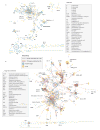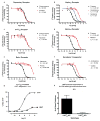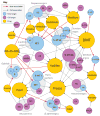Predicting new molecular targets for known drugs
- PMID: 19881490
- PMCID: PMC2784146
- DOI: 10.1038/nature08506
Predicting new molecular targets for known drugs
Abstract
Although drugs are intended to be selective, at least some bind to several physiological targets, explaining side effects and efficacy. Because many drug-target combinations exist, it would be useful to explore possible interactions computationally. Here we compared 3,665 US Food and Drug Administration (FDA)-approved and investigational drugs against hundreds of targets, defining each target by its ligands. Chemical similarities between drugs and ligand sets predicted thousands of unanticipated associations. Thirty were tested experimentally, including the antagonism of the beta(1) receptor by the transporter inhibitor Prozac, the inhibition of the 5-hydroxytryptamine (5-HT) transporter by the ion channel drug Vadilex, and antagonism of the histamine H(4) receptor by the enzyme inhibitor Rescriptor. Overall, 23 new drug-target associations were confirmed, five of which were potent (<100 nM). The physiological relevance of one, the drug N,N-dimethyltryptamine (DMT) on serotonergic receptors, was confirmed in a knockout mouse. The chemical similarity approach is systematic and comprehensive, and may suggest side-effects and new indications for many drugs.
Conflict of interest statement
The authors declare competing financial interests: details accompany the full-text HTML version of the paper at
Figures



Comment in
-
Drug discovery: Predicting promiscuity.Nature. 2009 Nov 12;462(7270):167-8. doi: 10.1038/462167a. Nature. 2009. PMID: 19907483 No abstract available.
-
Antabuse (disulfiram) as a pilot case of nonprofit drug.Int J Cancer. 2010 Nov 15;127(10):2486. doi: 10.1002/ijc.25237. Int J Cancer. 2010. PMID: 20143396 No abstract available.
References
-
- Ehrlich P. The Theory and Practice of Chemotherapy. Folia Serologica. 1911;7:697–714.
-
- Peterson RT. Chemical biology and the limits of reductionism. Nat Chem Biol. 2008;4:635–638. - PubMed
-
- Nobeli I, Favia AD, Thornton JM. Protein promiscuity and its implications for biotechnology. Nat Biotechnol. 2009;27:157–167. - PubMed
-
- Marona-Lewicka D, Nichols DE. Further evidence that the delayed temporal dopaminergic effects of LSD are mediated by a mechanism different than the first temporal phase of action. Pharmacol Biochem Behav. 2007;87:453–461. - PubMed
-
- Marona-Lewicka D, Nichols DE. WAY 100635 produces discriminative stimulus effects in rats mediated by dopamine D(4) receptor activation. Behav Pharmacol. 2009;20:114–118. - PubMed
Publication types
MeSH terms
Substances
Grants and funding
LinkOut - more resources
Full Text Sources
Other Literature Sources
Medical

